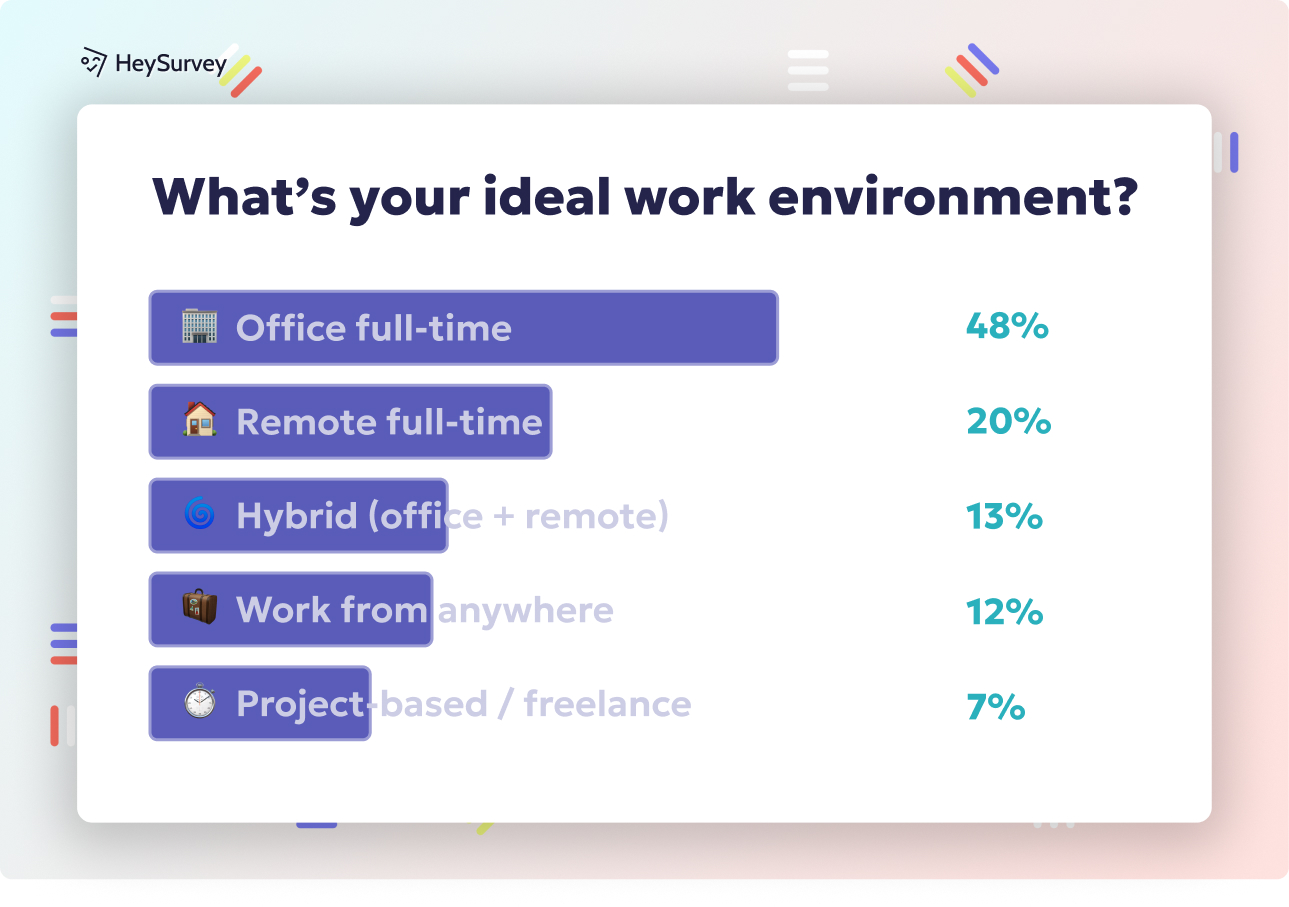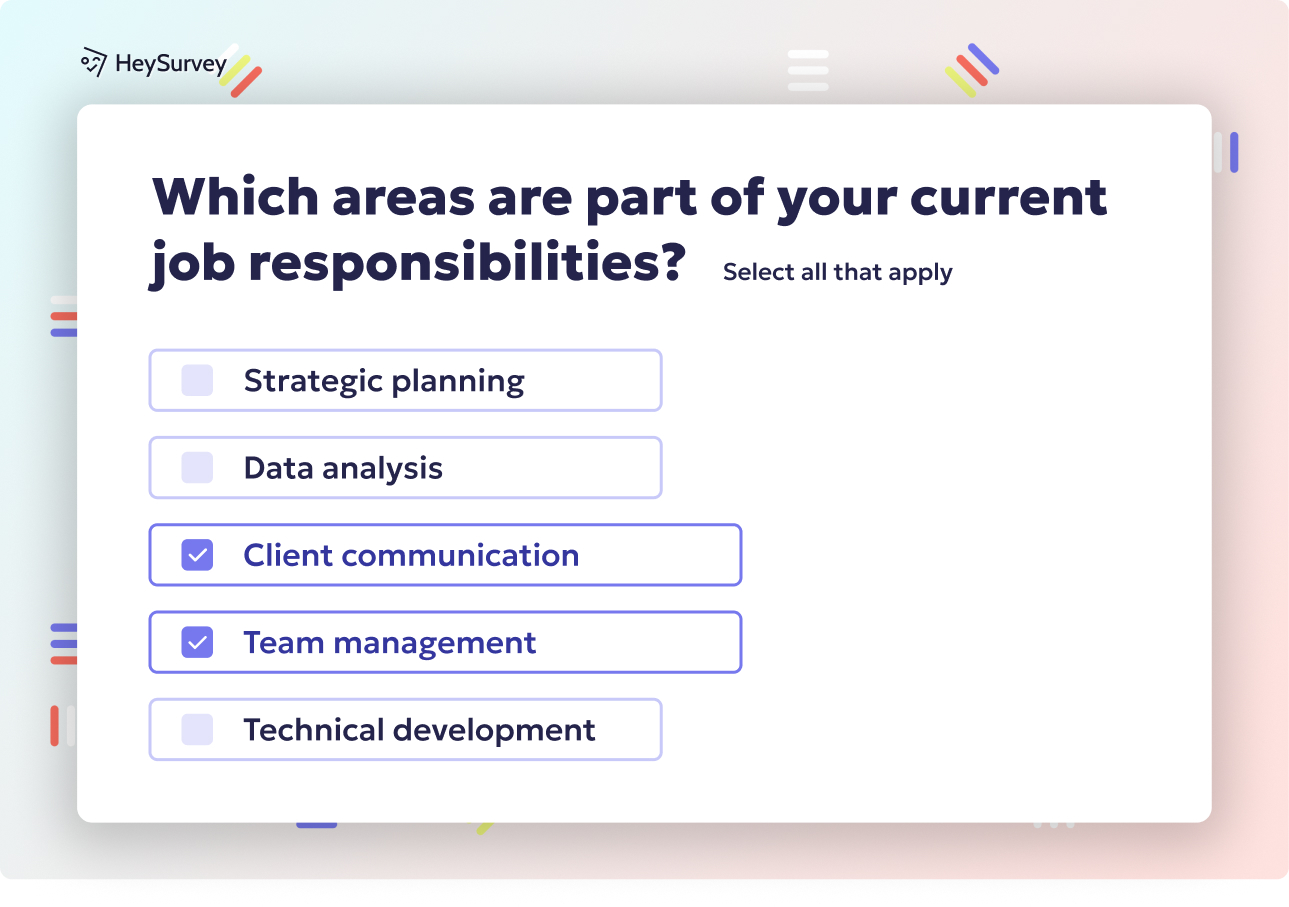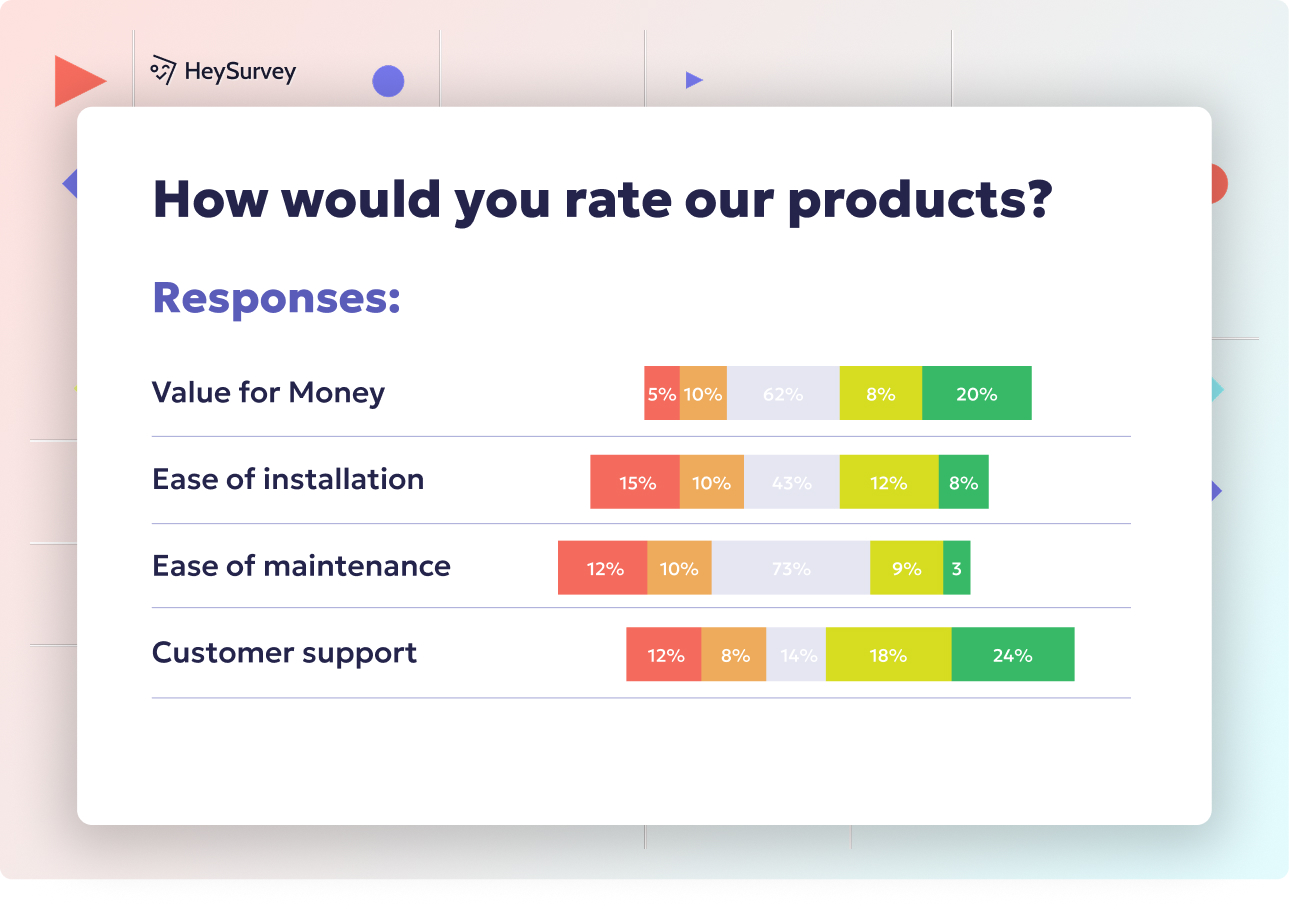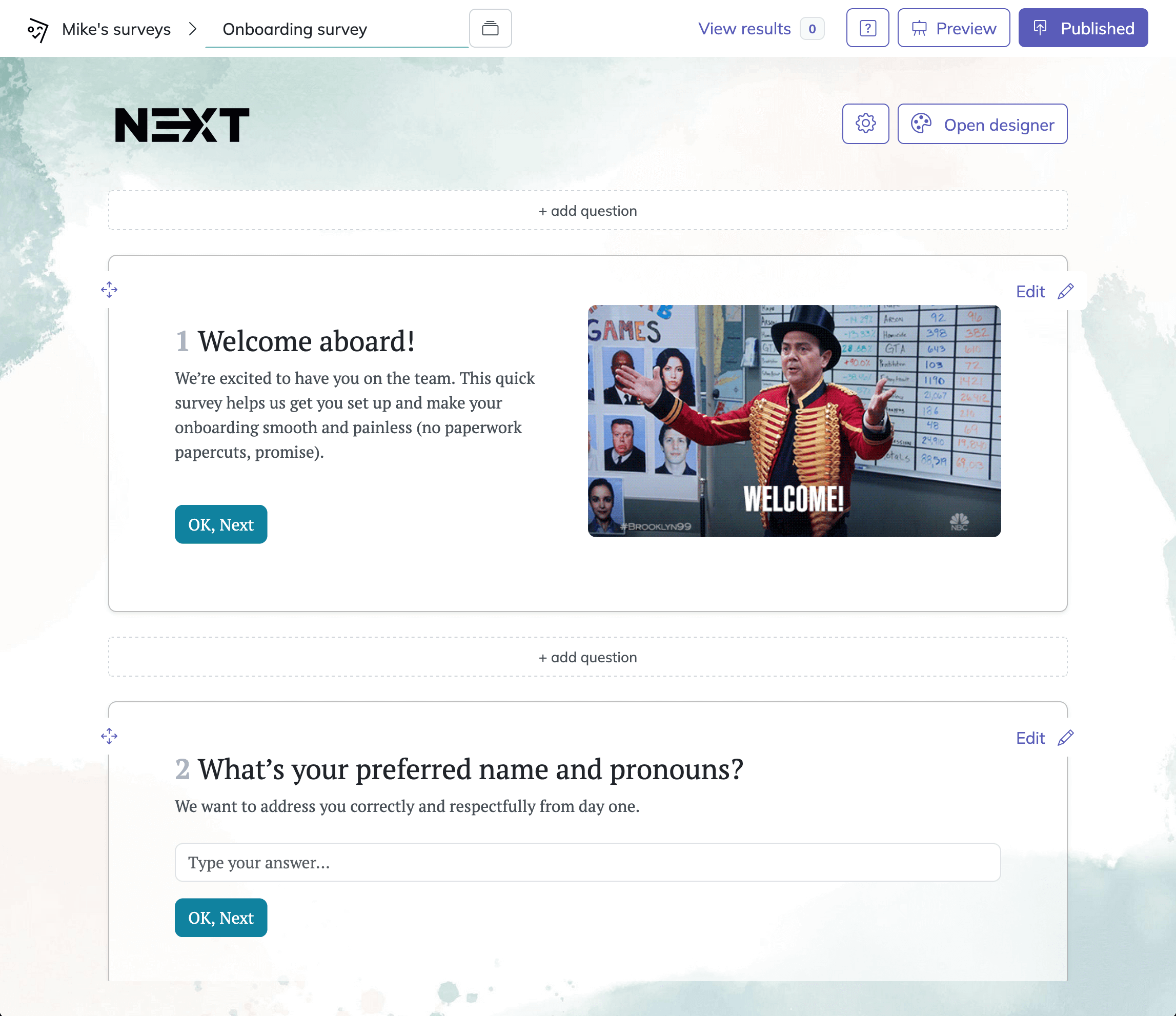32 Questions About Homelessness: Essential Surveys to Understand Housing Insecurity
Explore 27 essential questions about homelessness across demographics, attitudes, needs, services, policy, and lived experiences to deepen understanding.
Understanding homelessness goes beyond counting people without homes. If we want to create real solutions, we need to ask the right questions, in the right way, at the right time. That’s where a well-designed homelessness survey shines, guiding everything from local outreach to national policy. Whether you’re a policy-maker, a researcher, or just deeply curious about housing insecurity data, it’s essential to get those questions right.
Demographic Surveys: Understanding Who Experiences Homelessness
Why and When to Use This Type of Survey
Knowing who experiences homelessness shapes everything from funding applications to support program design. Demographic surveys offer a statistical snapshot that highlights high-risk groups you might otherwise overlook.
Deploy these surveys at the start of any research project into homelessness or when tracking progress over time. Their insights guide resource allocation, ensuring shelters, food programs, and medical outreach land where they’re needed most.
With clear, accessible questions, demographic surveys help identify:
- Underrepresented populations
- Emerging trends, such as rising homelessness among young adults
- Shifts in family homelessness patterns
Demographic data isn’t just for paper-pushers—it’s the backbone for age and gender among homeless populations research. The answers empower coordinated action between service providers, government, and local communities.
Sample Questions
What is your current age?
Which gender do you identify with?
What is your highest level of education completed?
What was your employment status immediately before experiencing homelessness?
Are you currently accompanied by any dependents (children, partner, pets)?
Demographic questions about homelessness are always a good starting point. They paint a human portrait, reminding us every data point is a person, not just a number.
In 2024, homelessness in the U.S. increased by a record 18%, with children under 18 experiencing a 33% rise, totaling 150,000. (reuters.com)

Creating a homelessness survey using HeySurvey is a breeze—even if you’ve never designed one before. Follow these three simple steps to get your survey up and running quickly, plus a couple of bonus tips to make it look and function just right.
Step 1: Create a New Survey
Start by logging in or jump straight into the HeySurvey homepage. You can begin from scratch by choosing “Empty Sheet”, or if you’re looking for a quick head start, pick one of the pre-built templates specifically designed for homelessness or social research surveys.
Once you select your starting point, the Survey Editor will pop up. Here, you can give your survey a name—something clear and catchy, like “Homelessness Needs Assessment.”
Step 2: Add Questions
Now, it’s time to build your survey with questions. Click the Add Question button at the top or in-between existing questions. HeySurvey lets you choose from various question types perfect for your needs—like:
- Text: for open-ended answers sharing personal experiences
- Choice: for multiple-choice or single-choice questions, ideal when you want quick stats
- Scale: to rate comfort levels, agreement, or satisfaction
- Dropdown: handy when offering many options in a neat package
Type in your question, add descriptions if needed, and mark certain questions as required so no essential answers slip through the cracks. Want to speed things up? Duplicate questions or add images and links to spice up the survey.
Step 3: Publish Your Survey
Once your questions look good, hit the Preview button to see how it appears to respondents. You can make last-minute tweaks in real time—from design to wording.
When you’re happy, hit Publish. If you don’t have an account yet, HeySurvey will ask you to create one so you can track responses. After publishing, you’ll get a shareable link you can send out, embed, or post wherever you want to collect data.
Bonus Step 1: Apply Branding
Want your survey to look professional and trustworthy? Use the Designer Sidebar to upload your logo, set colors, fonts, and backgrounds that match your organization’s brand. This adds polish and builds confidence with respondents, making it feel less like a generic form and more like a team effort.
Bonus Step 2: Define Settings or Skip Into Branches
Head over to the Settings Panel to configure important options, for example:
- Set survey open and close dates
- Limit the number of responses
- Redirect users to a thank-you page after submitting
Feeling fancy? Try branching to create a personalized journey through the survey. This means different questions will appear based on previous answers, making the experience smoother and results more relevant.
There you have it! With HeySurvey, you can go from zero to survey hero in just a few clicks—no complicated coding or design skills needed. Ready to get started? Just hit the button below to pick your template and dive right in!
Attitudinal Surveys: Gauging Public Perceptions and Stigma
Why and When to Use This Type of Survey
How people feel about homelessness is sometimes just as important as the hard facts. Attitudinal surveys offer insight into public opinion, funding support, and the stubborn stigma that shadows people without stable housing. These surveys often make all the difference before launching a public awareness campaign or voting on local funding measures.
Understanding opinions helps:
- Influence policy changes
- Direct advocacy messaging
- Reveal hidden biases in communities
You might deploy these before a new law takes effect or as part of an annual check-in on community sentiment. It’s amazing how often a single attitudinal survey can turn “no thanks” into “let’s do this!”
Sample Questions
How strongly do you agree: “Homelessness is primarily caused by individual choices.”
On a scale of 1–5, how comfortable would you feel interacting with a person experiencing homelessness?
To what extent do you believe local government should increase funding for homeless services?
Which preventive measure do you believe is most effective in reducing homelessness?
How much do you agree: “Housing is a basic human right.”
Surveys exploring public opinion on homelessness light the way for tackling stigma. And let’s face it—busting myths and changing minds can be even trickier than finding funding.
Exposure to homeless individuals, even indirectly, tends to increase public sympathy and support for addressing homelessness. (psu.edu)
Needs Assessment Surveys: Identifying Immediate and Long-Term Support Requirements
Why and When to Use This Type of Survey
Needs assessment surveys are the secret sauce for identifying urgent needs of homeless individuals. They shine brightest at intake centers, shelters, or during community outreach events. By focusing directly on what’s needed, we cut the guesswork and get support where it counts.
These surveys are crucial for:
- Prioritizing distribution of shelter, food, clothing, and healthcare
- Uncovering gaps in available resources
- Tailoring job and skills programs, so people can start rebuilding
Regular needs assessments smooth out bumps in service delivery, and they work for both crisis response and long-term planning.
Sample Questions
Which of the following resources do you need most urgently today? (food, shelter, healthcare, etc.)
How many meals did you eat yesterday?
Do you currently have access to safe overnight accommodation?
What barriers prevent you from accessing medical care?
Which skills-training programs would you be interested in joining?
Surveying needs assessment homelessness tells us what’s missing and what works. Collecting these details turns “helping” into “making a real difference.”
Service Utilization Surveys: Measuring Engagement With Existing Programs
Why and When to Use This Type of Survey
Imagine launching programs without ever checking if anyone uses them! Service utilization surveys measure just that—the use and effectiveness of shelters, food banks, outreach teams, and more.
They’re best served quarterly, after someone has interacted with a service, or during program evaluations. The main goals include:
- Pinpointing under-used services that need improvement
- Dynamic feedback for shelter management teams
- Understanding obstacles to service access
Regularly surveying service users helps fix problems quickly before they become crises—and proves what works when applying for grants.
Sample Questions
How often have you visited a homeless shelter in the past month?
Which local services have you tried to access but were unable to?
How satisfied are you with the assistance received from outreach workers?
What is the average waiting time you experience when seeking emergency housing?
What mode of transportation do you use to reach service providers?
A well-constructed service utilization survey keeps shelters and outreach responsive. After all, feedback is the breakfast of champions.
Service utilization surveys reveal that homeless individuals often face significant barriers to accessing consistent outpatient mental health and substance abuse treatments, leading to increased reliance on emergency services. (aspe.hhs.gov)
Policy Impact Surveys: Evaluating the Effectiveness of Local and National Initiatives
Why and When to Use This Type of Survey
Laws change lives—sometimes for the better, sometimes not so much. Policy impact surveys are key for tracking how well new housing programs, rent controls, or eviction bans perform outside the conference room.
Roll out these surveys before and after a new policy—the closer to implementation, the more accurate the reading. The main payoff includes:
- Real-world data on policy performance
- Early warnings about unintended consequences
- Success stories for advocacy and funding renewal
Everyone from city officials to grassroots organizers relies on these insights to steer resources wisely.
Sample Questions
Are you aware of the city’s new Housing First initiative?
Since the policy was implemented, has your housing stability improved, worsened, or stayed the same?
What obstacles have you faced in accessing benefits introduced by recent legislation?
In your opinion, has rent control affected homelessness in your area?
How would you rate the effectiveness of the eviction moratorium during the pandemic?
When it comes to policy impact on homelessness, surveys reveal whether great ideas on paper work in practice or need a total makeover.
Lived-Experience Narrative Surveys: Giving Voice to People With First-Hand Experience
Why and When to Use This Type of Survey
Quantitative data is important, but lived experience of homelessness brings the whole story to life. Narrative surveys give people who know homelessness best the chance to share their truth, uncover hidden challenges, and suggest real solutions.
Ideal for advocacy, grant applications, or documentary projects, narrative surveys build bridges between decision-makers and those experiencing housing insecurity. The most powerful policy change starts with a single voice saying, “This is how it really is.”
Their strengths include:
- Spotlighting overlooked barriers to housing
- Inspiring empathy and reducing public stigma
- Informing solutions that might not have emerged from numbers alone
A well-crafted narrative survey lets those affected share both daily hardships and moments of resilience.
Sample Questions
Can you describe the factors that led to your current housing situation?
What daily challenges do you face while experiencing homelessness?
What has been the most helpful form of support you have received?
How has homelessness impacted your physical and mental health?
What changes would make it easier for people like you to exit homelessness?
Using a qualitative homelessness survey brings stories forward that transform policies—and hearts.
Methodology & Sampling Considerations for Homelessness Research
How to Design Surveys That Are Fair and Effective
A homelessness survey methodology can make or break your research. Choosing your sampling frame might sound nerdy, but it determines if your data captures everyone you intend to study.
Three main sampling strategies are useful:
- Point-in-time counts: snapshot surveys, like HUD’s annual homelessness census, that count those experiencing homelessness on a single night
- Service-based recruitment: contacting people through shelters, meal programs, or outreach events to find regular and recurrent users
- Snowball sampling: using participants’ social networks to reach people who avoid formal services
Beyond method, ethics matter. Ethical research with homeless populations means always securing informed consent and treating sensitive topics with respect. Keep questions trauma-informed and respect privacy every step of the way.
Varied data collection—on paper, via mobile surveys, or in person—reduces bias, especially for people with no tech access. Multi-mode surveys mean inclusive research and better results.
Best Practices: Dos and Don’ts for Crafting and Deploying Homelessness Surveys
How to Craft Questions That Matter
Beauty might be in the eye of the beholder, but in the world of best practices homelessness survey design, clarity is king. Craft your surveys using a few golden rules:
- Use clear, plain language—ditch jargon
- Show cultural sensitivity and adapt for local differences
- Offer incentives (snacks, gift cards, bus passes) to encourage participation
- Pilot test the survey to spot confusing questions
- The shorter, the better—respect everyone’s time
- Protect all participant data like it’s classified
It’s easy to stumble into common survey traps:
- Asking leading or overly intrusive questions
- Ignoring people who don’t use shelters
- Forgetting to schedule surveys when people are most available
For higher response rates:
- Keep surveys brief and engaging
- Allow flexible timing and locations for participation
- Partner with trusted organizations and people who already know the community
A little care at the start turns a dull questionnaire into a dynamic tool for social change. That’s what genuine survey design tips housing insecurity look like.
Getting homelessness surveys right means we stop guessing and start listening. Whether you’re exploring urgent needs or measuring big policy impacts, it’s all about asking the best questions possible. Data only changes lives if it’s accurate, human, and genuinely heard. The right questions—delivered with respect—unlock answers for everyone, moving us closer to ending homelessness.
Related Demographic Survey Surveys

25 Poverty Survey Questions for Measuring Household Poverty Effectively
Explore a comprehensive guide with over 35 poverty survey questions covering demographics, income...

30 Demographic Survey Questions for College Students Guide
Explore 35 essential demographic survey questions for college students covering identity, academi...

31 American Community Survey Questions: Types & Expert Tips
Explore 35 American Community Survey questions with types, sample items, and expert tips to maste...

